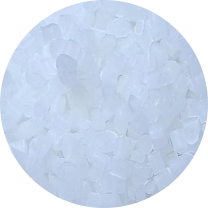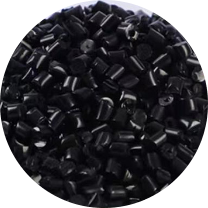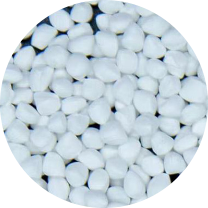How to ensure that FPM's functional particles have good compatibility with different plastic substrates to avoid problems such as delamination, precipitation, or performance degradation?
How to ensure that FPM's functional particles have good compatibility with different plastic substrates (such as polyethylene, polypropylene, polyvinyl chloride, etc.) to avoid problems such as delamination, precipitation or performance degradation?
To ensure that FPM(Functional Property Masterbatch)'s functional particles have good compatibility with different plastic substrates and avoid problems such as delamination, precipitation or performance degradation, the following measures can be taken:
Choose appropriate functional particles:
Depending on the nature of the plastic substrate and the required functionality, functional particles are selected that are compatible with it. For example, for polar plastics such as polyvinyl chloride (PVC), functional ones with polar groups should be selected.
Particles to improve compatibility:
Surface treatment:
Surface treatment of functional particles, such as the introduction of coupling agents, surfactants or other compatibilizers, can increase the interaction between the particles and the plastic substrate and improve dispersion and compatibility.
Premixing and grinding:
Before mixing the FPM with the plastic substrate, the functional microparticles are premixed and or milled to reduce the particle size and increase their uniformity in the substrate.
Control processing conditions:
During plastic processing, parameters such as temperature, pressure, time and shear rate are controlled to ensure uniform dispersion and stable mixing of functional particles in the plastic substrate.
Compatibility test:
Before developing new products or changing formulations, conduct compatibility testing to evaluate the compatibility between functional microparticles and different plastic substrates. This can be achieved by preparing samples and conducting physical property tests (such as tensile strength, impact strength, thermal stability, etc.) as well as microstructural observations (such as scanning electron microscopy, transmission electron microscopy, etc.).
Use compatibilizer:
In some cases, specific compatibilizers can be added to enhance the interaction between functional microparticles and the plastic substrate. Compatibilizers are usually compounds containing two different functional groups that can form chemical bonds with both the plastic substrate and the functional particles.
Optimize FPM recipe:
According to actual application requirements, the formula of FPM is optimized and the type, content and particle size distribution of functional particles are adjusted to find the best balance point and ensure compatibility with different plastic substrates.
Through the above measures, we can ensure that FPM's functional particles have good compatibility with different plastic substrates to the greatest extent, thereby avoiding problems such as delamination, precipitation or performance degradation. However,
Due to the wide variety of plastics and functional microparticles, specific situations may require further experimentation and testing to determine the best solution.

Antibacterial Masterbatch

Antibacterial Masterbatch
prevNo previous article
nextWhat is Meltblown Masterbatch application and development trend in the industry?


 English
English 中文简体
中文简体 한국어
한국어 عربى
عربى













